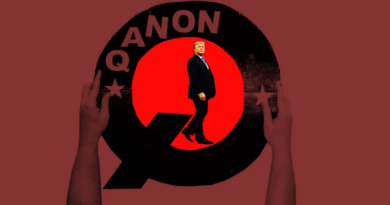How QAnon hijacks anti-trafficking, and what can be done about it

QAnon’s portrayal of trafficking repeats many of the myths that anti-trafficking experts have long sought to rectify. These include the common misunderstanding that human trafficking is only about sex, and has little to do with labour exploitation, organ removal, child soldiers, or child marriage. It suggests that boys are more likely to be trafficked than men, which is not true. And QAnon’s focus on child abduction perpetuates the falsehood that most human trafficking victims are kidnapped, which is also not the case.
Q has grown to post on a variety of topics and individuals that divide Americans, including Hillary Clinton, George Soros, Barack Obama, Nancy Pelosi, Donald Trump, Edward Snowden, the Russian collusion investigation, fake news, the Red Cross, Jeffrey Epstein, Covid-19, and electoral fraud. Its traction is immense, with the Institute for Strategic Dialogue reporting tens of millions of social media posts inside the U.S. and across other countries. The entry point for QAnon participation, however, is the foundational belief that child abduction and exploitation are the core source of elite power.
QAnon’s Effects
The trafficking conspiracies shared in support of QAnon hinder authentic attempts at trafficking prevention. Speaking anonymously because of Q threats she has received, a senior staffer at a national anti-trafficking organisation in Washington said, “it definitely impedes our work when we’re getting harassed and trolled over misinformation campaigns … It’s exhausting work. It’s traumatic work. It’s something that all of us do because there’s such an extreme need in our communities and around the country. And this just makes it all so much harder.”
Beyond its use of old myths, QAnon’s structure (or non-structure) appears to invite even more unique and bizarre mythologising from its devotees. Among these is the unsubstantiated claim that the furniture store Wayfair runs a child trafficking ring and names furniture pieces after real child trafficking victims. Another shared rumour cautions people to be suspicious of white vans with external locks as a sign of possible trafficking activity. Almost by design, the absurdity of these stories makes reasoned response seem fruitless. Sincere and informed anti-trafficking messages can engage audiences on challenging, critical questions. They are not equipped, however, to respond to ridiculous memes that are wholly divorced from reality.


